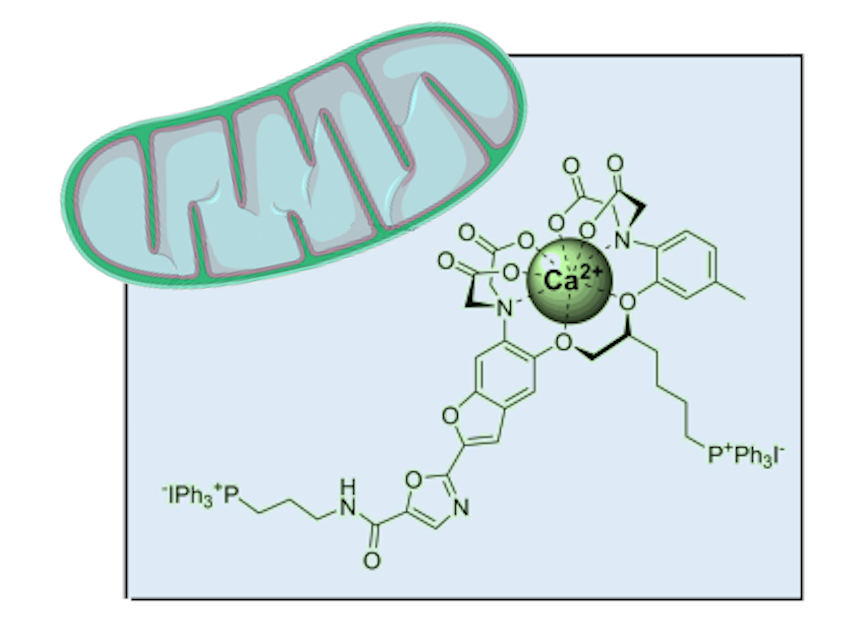Calcium signaling is a major signal transduction pathway in living cells. Thus, the development of tools to directly monitor calcium dynamics is of critical importance. In recent years, attention has focused on Ca2+ dynamics inside intracellular organelles, such as mitochondria. So far, genetically encoded Ca2+ indicators (GECIs) have been widely used to measure Ca2+ concentrations inside mitochondria.
Diana Pendin, University of Padua and Italian National Research Council, Andrea Mattarei, University of Padua, Italy, and colleagues have developed a new fluorescent Ca2+ sensor that targets the mitochondrial matrix. Specifically, the researchers have synthesized a calcium-sensitive fluorescent dye (pictured) containing two lipophilic cations that can pass through the phospholipid bilayer of the inner mitochondrial membrane and accumulate in the negatively charged mitochondrial matrix.
The resulting probe selectively localizes inside mitochondria and mitochondrial Ca2+ dynamics can be monitored via changes in the fluorescence upon calcium binding of the dye. The approach can even work in experimental systems where the delivery of genetically encoded indicators is impractical or troublesome. The probe could be used to investigate mitochondrial Ca2+ dynamics in unexplored experimental systems.
- A Synthetic Fluorescent Mitochondria-Targeted Sensor for Ratiometric Imaging of Calcium in Live Cells,
Diana Pendin, Rosa Norante, Andrea De Nadai, Gaia Gherardi, Nicola Vajente, Emy Basso, Nina Kaludercic, Cristina Mammucari, Cristina Paradisi, Tullio Pozzan, Andrea Mattarei,
Angew. Chem. Int. Ed. 2019.
https://doi.org/10.1002/anie.201902272




